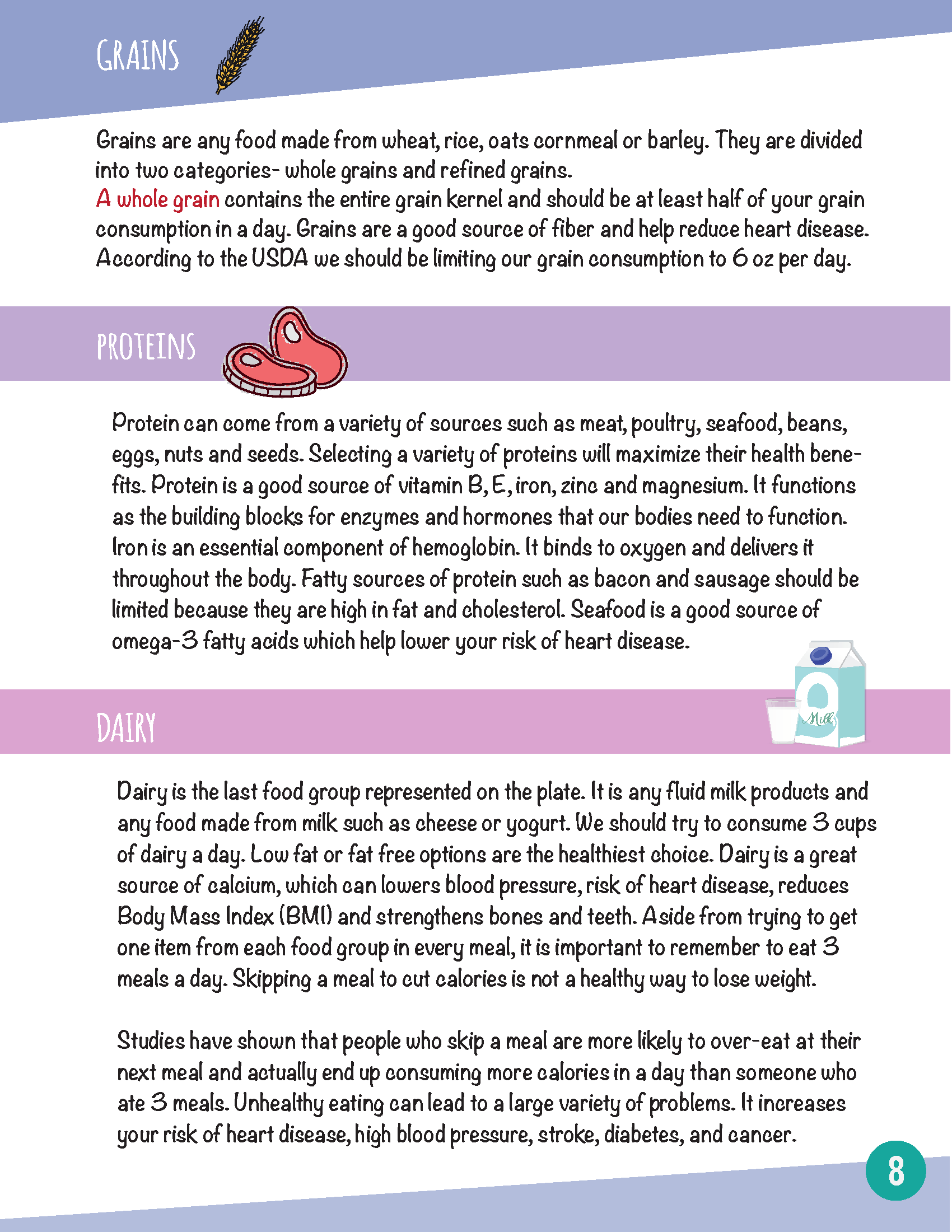
GRAINS
Grains are any food made from wheat, rice, oats, cornmeal or barley. They are divided into two categories- whole grains and refined grains. A whole grain contains the entire grain kernel and should be at least half of your grain consumption in a day. Grains are a good source of fiber and help reduce heart disease. According to the USDA we should be limiting our grain consumption to 6oz per day.
PROTEINS
Protein can come from a variety of sources such as meat, poultry, seafood, beans, eggs, nuts and seeds. Selecting a variety of proteins will maximize their health benefits. Protein is a good source of vitamin B, E, iron, zinc and magnesium. It functions as the building blocks for enzymes and hormones that our bodies need to function. Iron is an essential component of hemoglobin. It binds to oxygen and delivers it throughout the body. Fatty sources of protein such as bacon and sausage should be limited because they are high in fat and cholesterol. Seafood is a good source of omega-3 fatty acids which help lower your risk of heart disease.
DAIRY
Dairy is the last food group represented on the plate. It is any fluid milk products and any food made from milk such as cheese or yogurt. We should try to consume 3 cups of dairy a day. Low fat or fat free options are the healthiest choice. Dairy is a great source of calcium, which can lower blood pressure, risk of heart disease, reduces Body Mass Index (BMI) and strengthens bones and teeth. Aside from trying to get one item from each food group in every meal, it is important to remember to eat 3 meals a day. Skipping a meal to cut calories is not a health way to lose weight.
Studies have shown that people who skip a meal are more likely to over-eat at their next meal and actually end up consuming more calories in a day than someone who ate 3 meals. Unhealthy eating can lead to a large variety of problems. It increases your risk of heart disease, high blood pressure, stroke, diabetes, and cancer.